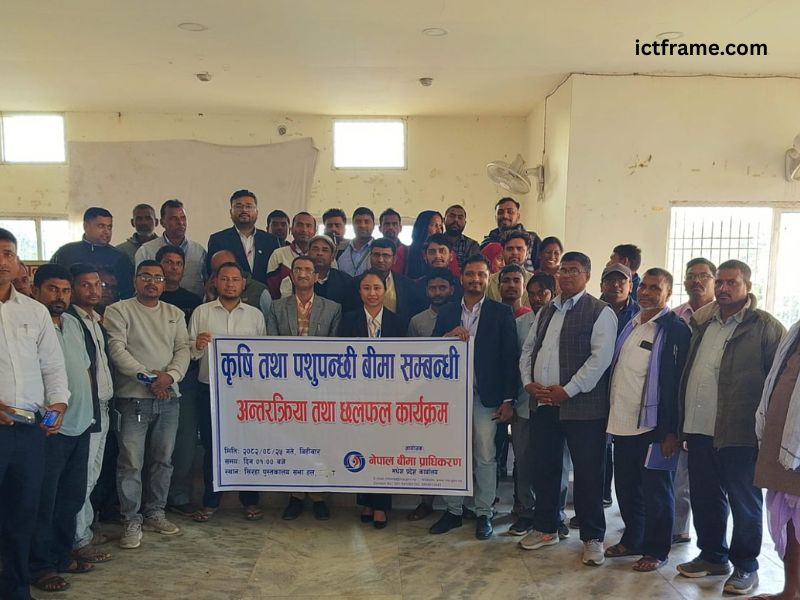Sustainable Development and Connectivity: The Future of Nepal’s Infrastructure
14 September 2024, Kathmandu
The Nepal Infrastructure Summit 2024, held in Kathmandu, brought together key stakeholders from government, private sectors, and international organizations to discuss strategies for advancing Nepal’s infrastructure landscape.
Sustainable Development and Connectivity
The event focused on sustainable development, regional integration, and private sector engagement, setting the stage for a greener and more connected future.
Sustainability: A Green Path Forward
Nepal faces significant challenges in balancing economic growth with environmental conservation. The country’s infrastructure, particularly in hydropower and tourism, is vulnerable to environmental impacts such as climate change and melting Himalayan glaciers. As highlighted during the summit, there is a looming risk of turning Nepal into a “concrete jungle” if sustainable practices are not prioritized. Incorporating nature-based solutions, such as urban parks and wetlands, was emphasized as a critical way to enhance resilience and mitigate climate-related risks.
Regional Connectivity: Bridging Gaps and Building Networks
One of the major takeaways from the summit was the importance of regional integration. Improving Nepal’s cross-border infrastructure with India and Bangladesh will enhance trade and foster stronger regional ties. Key areas of focus included upgrading cross-border transportation and building efficient railway links.
The rise of low-cost airlines has already improved regional connectivity, but more investments are needed in aviation infrastructure to further position Nepal as a regional transit hub. Expanding digital connectivity, especially in mobile banking and payment systems, was also noted as crucial for boosting cross-border financial integration.
Private Sector Engagement: The Road to $77 Billion
Nepal’s infrastructure investment needs are enormous, with estimates suggesting that $77 billion is required by 2030. Currently, the private sector contributes only 4-5% of the GDP to infrastructure. However, the summit underscored that Public-Private Partnerships (PPPs) have proven successful in energy projects like Khimti and Bhotekoshi, and should be expanded into other sectors such as transport, urban development, and aviation.
Reforms in policy and governance were also emphasized as necessary steps to boost private sector participation. Enhancing the legal framework, improving transparency, and ensuring a stable investment climate were key factors in building investor confidence.
Monetary and Fiscal Policies: Navigating Financial Challenges
Nepal is grappling with declining revenue collection and rising expenditures, leading to increased borrowing. The summit highlighted that, although Nepal’s financial system is well-capitalized, stringent lending rules limit project financing opportunities.
Land acquisition challenges further complicate infrastructure projects. The need for policy reforms to streamline land acquisition and improve institutional coordination was a recurring theme, as efficient infrastructure development hinges on these factors.
Energy and Water Resources: Tapping Untapped Potential
Nepal’s energy sector is at a crossroads. Despite substantial hydropower potential, only 5% of energy comes from hydro sources, with a majority still relying on agro and forest resources. To fully leverage its hydropower capacity, Nepal needs to address transmission infrastructure gaps and create better access to domestic and cross-border markets.
Opportunities also lie in solar power, hydrogen derivatives, and seasonal storage projects. The summit called for clear legislation and prioritization of energy and water infrastructure, alongside increased private sector involvement to meet the projected electricity demand of 44,812 MW by 2050.
Urban Development and Affordable Housing: Building for the Future
Rapid urbanization is a double-edged sword for Nepal. While cities like Kathmandu and Pokhara are expanding, there are significant infrastructure deficits and housing shortages. The summit stressed the need for innovative financing models like Build-Operate-Transfer (BOT) to address these challenges. Urban retrofitting and green development were identified as essential to meeting the estimated $60 billion investment required to tackle climate-related infrastructure gaps.
Conclusion: A Roadmap to 2030
The Nepal Infrastructure Summit 2024 has set an ambitious but achievable vision for the country’s infrastructure development. By focusing on sustainability, regional integration, and private sector engagement, Nepal is poised to transform its infrastructure landscape. As the summit concluded, the message was clear: A collaborative effort across sectors and borders will be key to realizing Nepal’s infrastructure dreams by 2030.
Fifth Edition of Nepal Infrastructure Summit Concludes with Great Success
Government Faces Hurdles in Attracting Private Investment in Infrastructure
Nepal’s Prosperity in Sustainable Infrastructure: Finance Minister Poudel
Green Infrastructure Investment in Nepal: Experts Recommend Prioritizing Sustainable Growth
South Asia’s Trade Growth Hampered By Lack Of Cross-Border Infrastructure
For more: Sustainable Development and Connectivity







